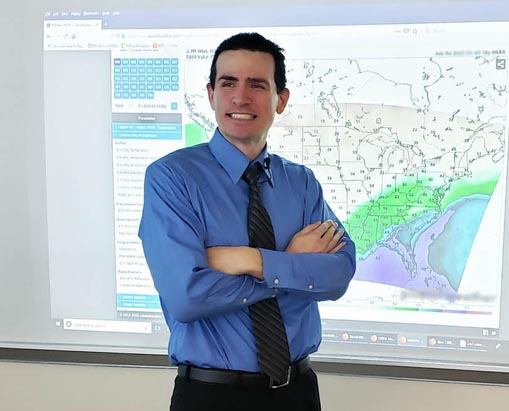Is storm chasing out of control? Let's talk about it.
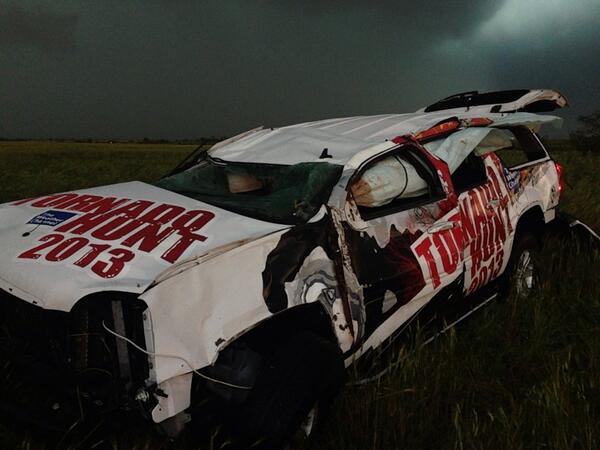
It’s severe weather season in various parts of the country, which means lots of storm chasers and spotters will be out observing severe weather. Each year, there is also talk about the importance of safety, respect for others, respect for nature, and issues between storm spotters and chasers. I thought would discuss some current storm chasing and spotting issues as well as some solutions. One of the first things we should do as educators, especially when students ask about storm chasing, is to discuss the importance of safety and respect, which is what I will do in this lengthy post.

Many storm chasers and spotters help with public safety by observing and reporting potentially dangerous weather events, such as hail, winds, and tornadoes. However, it’s also true that “everybody and their brother” goes out to take pictures of severe weather, regardless of whether they know what they are doing or not. Meteorology leaders should continue discussing respect, due regard for the safety of self and others, and the issues that need to be addressed with the current state of the storm chasing and storm spotter communities.
Do we need ground reports of severe weather?
Yes. Meteorologists need (and appreciate) high-quality, accurate reports to help observe and confirm dangerous weather. However, as a scientist, I need to mention that our electronic severe weather network has greatly improved. What’s going on just above the surface is still difficult to detect, but we can scientifically determine favorable environments for tornadoes as well as significant rotation in storms.
We can issue tornado warnings (radar indicated) without someone needing to be 300 feet away from the tornado. Our video network has also improved, which allows meteorologists to control remote cameras to observe severe weather. Anyone out during severe weather should keep a safe distance, especially during tornadic activity.
Tornadoes can be reported from safe distances. It’s really important that people out during severe weather have some sort of storm and safety training. This should be emphasized to everyone wishing to go out and chase storms.
Should we pass laws against storm chasers?
It would be very foolish to pass legislation against storm chasing, especially in the US, which is supposed to be a free country. A law like this could make an average road trip illegal. How do you know who is and isn’t a storm chaser? Should storm chasers carry ID cards to help law enforcement identify them? This would be a huge legal precedent because anyone on the road during a storm could be considered a storm chaser. If storm chasing laws were enacted, they may be unconstitutional, and would likely mean anyone driving a car during a thunderstorm would be committing an illegal act. Anyone considering such laws should consider the ridiculous outcome of outlawing storm chasing.
Is storm chasing out of control?
Again, we have a huge issue defining storm chasing because anyone driving a car during a storm could be considered a storm chaser. Today, there are more vehicles on the road. The sensational media has also perpetuated the thrill-seeking wave of storm chasing. A majority of storm chasers do not block emergency vehicles, nor do they break traffic laws any more than the average person does. However, it only takes a few people to get the attention of the nation. We should be very careful about the scope of the problem and potential solutions.
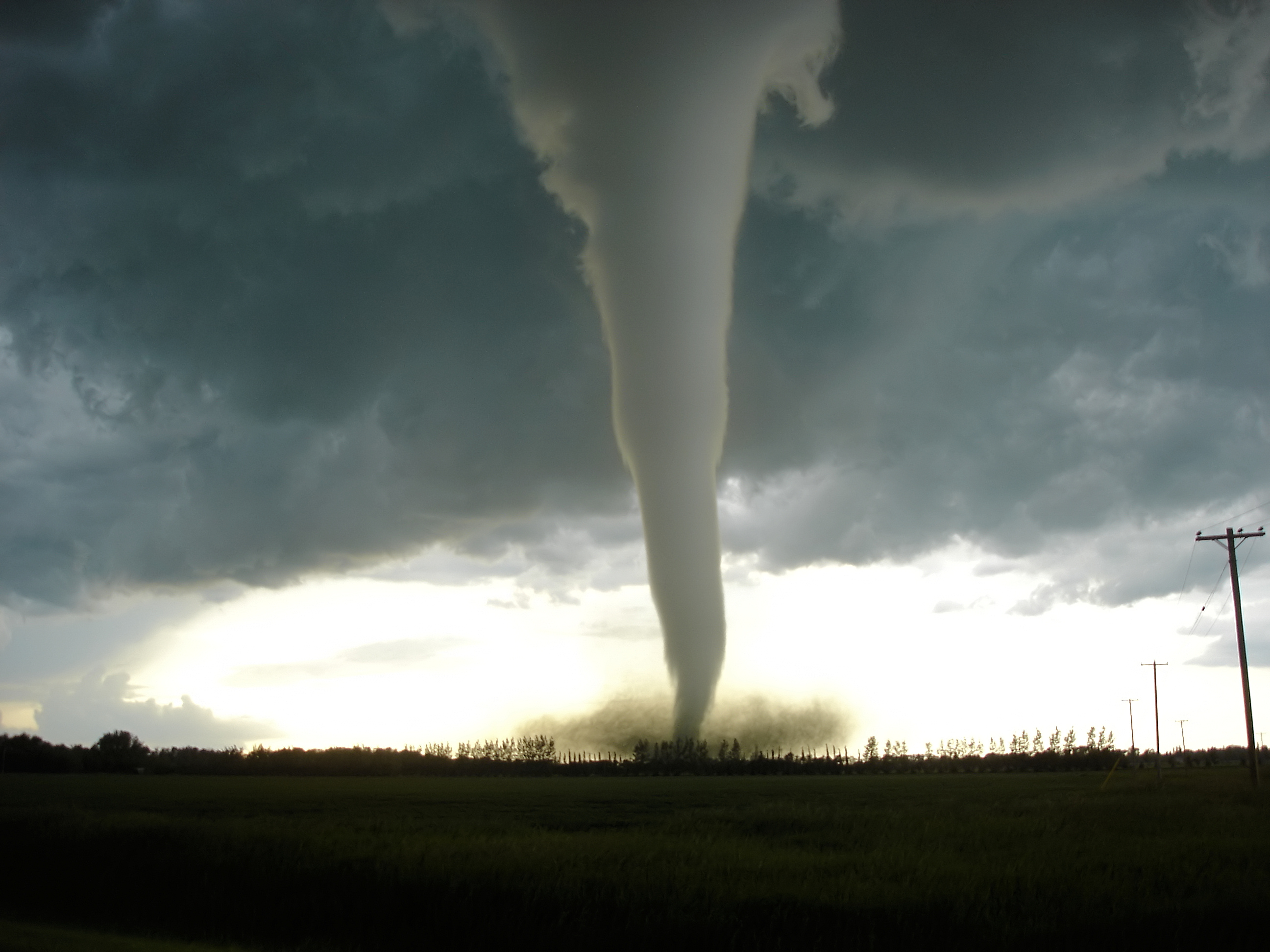
Many new meteorology students ask about storm chasing. Most of my students have seen movies, such as Into the Storm, Twister, and the popular Discovery Storm Chasers series. Hollywood and the media have certainly sensationalized storm chasing to the point of creating potential problems. Technology has also got to the point that anyone can get a camera and go chase storms without having any skills. There’s an app that will take you to a tornadic storm, which could end your life!
I think it’s important that meteorology students understand that storm chasing isn’t a huge part of meteorology. Most undergraduate degree programs don’t require storm chasing courses as a requirement for a degree. There is so much more to meteorology than storm chasing. In fact, severe and unusual weather represents only a few of the courses you would take. Thermodynamics, synoptic, radar, weather forecasting, math, statistics, mesoscale, computer programming, and other courses are more representative of meteorology practice.
Some students ask about storm spotters vs. storm chasers (there is a difference).
In my 20+ years of storm chasing, having a ham radio license, participating as a Skywarn net control at the National Weather Service, and also being a meteorologist, scientist, etc., I’ve made some professional observations of the storm chasing vs. storm spotting community. I want to share these with the internet world.
1. Storm chasers often have more experience in identifying storm features. A veteran storm chaser will have experienced exponentially more storms than a statically located storm spotter.
Storm spotters are frequently trained to observe severe weather and are often stationed only within their county. Every year, storm chasers travel thousands of miles, cross multiple states, deal with multiple Skywarn net control operators, and observe multiple rare supercells, tornadoes, etc. A storm spotter might experience 1 large rare tornado in their lifetime while located in a single county, but a veteran storm chaser might experience dozens more in the same amount of time. Skywarn nets should welcome veteran chaser participation.
2. The media often covers “storm spotters” with stories about serving the community during times of severe weather by reporting to the National Weather Service, rightfully so. However, the same media coverage of “storm chasers” often involves near death video, people screaming how awesome it is that a house was just destroyed, traffic jams, speeding, thrills, etc.
Obviously, one is painted in a more negative light than the other, which is a problem created by irresponsible chasers, the media, and the public that love sensational content.
3. Storm spotter training is a minimum educational requirement that helps people identify and report severe weather. However, just because a person has attended a one hour presentation doesn’t immediately mean they automatically have the ability to identify and efficiently report severe weather.
It takes years of experience to get good at severe weather observation and reporting. Unless there is an obvious wedge tornado on the ground, other storm features require experience (beyond attending one training session) to recognize. Spotter training is an excellent start, and it is a great community tool, but it’s just a start. There must be practice and it must continue over time.
4. There have been some (many exaggerated) reports of storm chasing “convergences” causing traffic issues, especially for first responders. It’s worth noting that many of these cases were actually local chasers causing the issues (not people from out of state). This issue could be addressed by people simply exercising common sense and pulling off the road, giving way to emergency vehicles, regarding traffic regulations, etc. There are already laws in place to govern traffic systems. Traffic is getting worse in general in the US due to a scientific process, called urban sprawl and blight – whether storms happen or not more people are going to be on the roads.
In 2005, I had so many random local people following my car… I knew there was a boom in interest with storm chasing. Our local radio stations were even asking people to call in for live reports, which encouraged people to get in their cars and drive into severe storms. People weren’t really blocking traffic, just causing more congestion (no different than regular rush traffic). These were just curious people wanting to see what it was like to storm chase. This will only get worse as we still rely on old transportation and there are more cars than ever before – people like to drive.
It only takes one bad behavior example to give an entire group of people a bad image – keep this in mind. Bad drivers are always on the road and we need to do better about driver education – the whole process of actually getting a driver’s license. Speeding is also a problem with the general public, regardless of storm activity, not limited to storm chasers. This problem only gets worse with rising populations and care usage – everyone’s driving!
Interestingly enough, these days, anyone with a camera that is out during a storm is called a storm chaser by the media, which is half of the problem with negative storm chasing publicity.
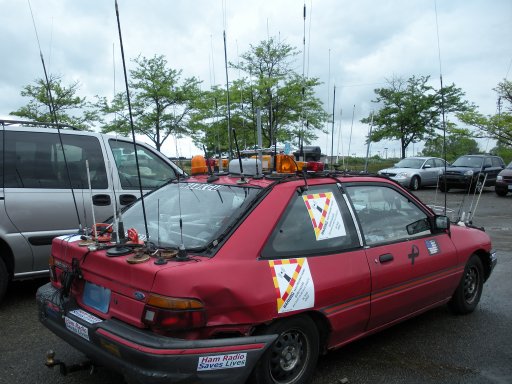
If I storm chase these days, I’m covert about it: low profile antennas, no decals, no lights, etc. Every now and then, I will go storm chase when we have tornado outbreaks. There may be a few times where I do weather reports for the media. Otherwise, I’m busy doing other things. I don’t want to attract the wrong attention.
5. Newer technologies are more popular than amateur radio, especially for storm information and reporting. Live texting, phone, and high speed internet (live pictures/video) offer more stable bandwidth and coverage, especially in emergencies.
Ham radio still serves key roles in certain limited emergency communications circumstances, but cannot compete with modern commercial high bandwidth communications network servers and client technologies (at least in its current state, in terms of infrastructure, equipment, persons, and regulation). I’ve always said amateur radio was a great tool for certain volunteer activities — as a supplement, not replacement or substitute for today’s critical commercial commercial communications systems.
6. Chaser vs. Spotter tensions exist, especially when the media runs stories that cause division or misunderstandings. I’m going to get a little lengthy here, for context purposes.
For example, a recent April 2016 Stormtrack.org forum post discussed a closed amateur radio net allegedly attempt to turn away an experience storm chaser from participating in the net. Some of the storm chasing community responded in outrage against the Texas amateur radio group that tried to turn away the experienced chaser (more like asked him to stop transmitting on their frequency/you really can’t turn away a storm spotter report, he could just phone it in). This recent controversy also stems from a random Times Record News article that paints storm chasers in a very negative light.
Lynn Walker is a columnist for the Wichita Falls, Texas Times Record News article (link above). Here is a quote from him basically saying they don’t need any more trained and experienced storm chasers:
“Frankly, in a city that has had three major tornado strikes and is served by a professional NWS office, a set of emergency managers, storm-conscious media, and a trained and effective spotter network, we can take care of ourselves. Thank you.”
First, I can tell the world that his remarks do not reflect the greater consensus of the professional meteorology community. In fact, it comes off as arrogant and ignorant. Everyone has an opinion and can get on the internet, but not all opinions hold their weight. The professional meteorology community, especially those involved in decision-making, know that high-quality, trained and experienced, resources are hard to come by and should be encouraged, not stifled.
Part of that “spotter network” Walker referred to includes many storm chasers. In fact, the “storm-conscious media” often relies on experienced storm chasers for live video content, rather than local storm spotters. Many TV stations have their own volunteer storm chasers that are not employees of the station. Many TV stations also directly/indirectly encourage people to go out and storm chase so they can send pictures/videos to the station (get more ratings).
The general public is also at fault for sensationalism because they tune in and give sensational media ratings/money. In fact, the general public seems to love risky storm chasing behavior, often giving millions of views to videos where people try to get as close as they can to a tornado. There may even be a day (soon) when the general public tunes into live storm websites, rather than a TV station or newspaper website to get their severe weather information.
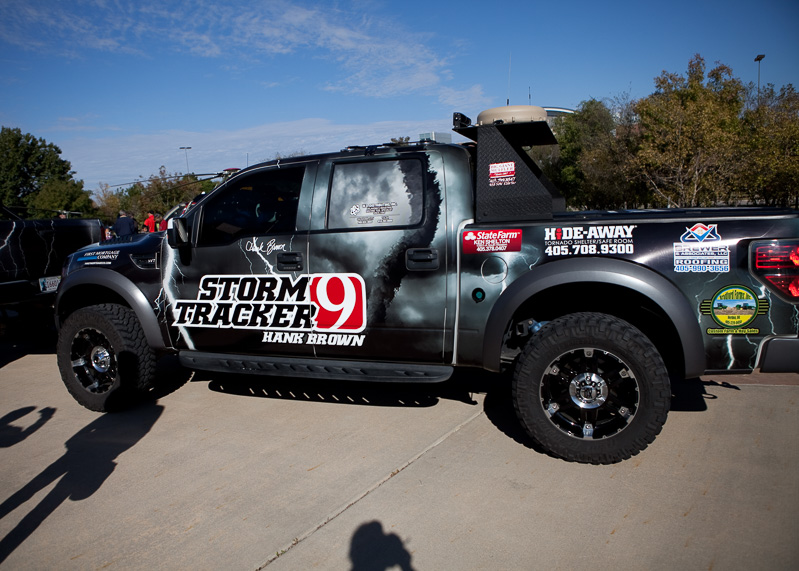

The news media, including newspapers, TV, radio stations, Hollywood, and news networks played a huge role in causing the sensational wave of irresponsible thrill-seeking storm chasing. Are ratings more important than the safety of your audience, city, and employees?
I’m not going to spend too much time on that one example from a random columnist in Texas, but it is a good example of chaser vs. spotter animosity. Truthfully, articles like that only serve to cause divide, offering no actual solutions or meaningful professional perspective.
Do storm chasers help or hurt local spotter networks?
My professional opinion is that storm chasers and storm spotters can work together, especially when working towards the same goal of reporting high-quality, accurate severe weather observations to meteorologists. All severe weather nets should be open to participation for any licensed amateur radio operator. Veteran chasers should be seen as an asset to local amateur radio severe weather nets, since they often have more severe weather observation experience. There have also been numerous cases where local storm spotter nets were not activated during severe weather or a trained spotter wasn’t available in a certain area of interest.

If I’m looking at radar, I can see potential danger areas and might want a report from those areas to confirm what I see. I would ask for reports (and double confirmations) from any trained spotter. Storm chasers can “fill the void” and help increase trained spotter coverage during severe weather events. We want lots of high-quality resources, which helps us make important and informed decisions.
I think this event discussed on Stormtrack was a bit overblown on both sides. However, if enough people have too much trouble with amateur radio, they will find other means, which makes ham radio less relevant to severe weather and emergency communications these days.
If you can’t get through on an amateur radio repeater, use a cell phone, Spotter Network, NWS report, or other modern method to communicate. In some cases, other more modern methods of storm reporting are actually encouraged over ham radio, especially if it offers picture, video, GPS, and automatic reputation verification resources.
7. All storm chasers and spotters should have the utmost respect for nature. Nature doesn’t care about who you are, it can and will kill you, especially if you are not careful.
Killer tornadoes can be over a mile wide, have winds above 250 mph, block your escape routes, change directions, etc. It doesn’t take a tornado to kill you, some people die from traffic accidents. While experiencing a rare tornado is something you will never forget, releasing your brand’s chemical thrill mechanisms, we should not forget the damage it does to people and property. A single tornado can destroy someone’s life, family pictures, priceless valuables, and take the lives of those they love.
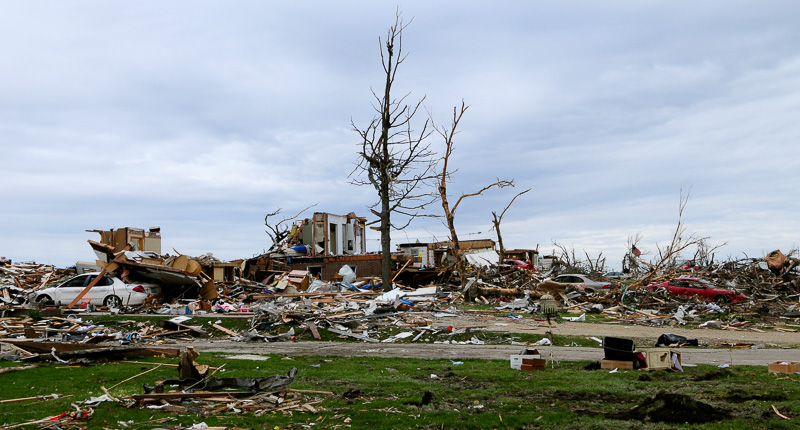
8. All storm chasers and spotters should respect others.
It doesn’t help the storm chasing or spotter community when people post videos to YouTube where they are going through someone’s home after a tornado (on private property without permission), yelling “woo-hoo” as a tornado destroys someone’s life, etc. Emotions get the best of people, especially if they have no training on how to behave during a chaotic situation. People are free to do whatever — and they should be free. However, if you plan on showing your video to the public, consider a standard of respect for others.
9. Claims that all storm chasers enhance the scientific community are highly exaggerated.
I’m constantly having to keep up with science journals as a professor trying to stay current with research. The claim that all storm chasers are continuously enhancing the scientific community with new and useful research findings is very exaggerated.
Some chasers are contributing to the scientific community, but they are few in number, compared to the overall number of chasers, and most of the general public and media will never know the names of these scientists or much detail about what they are doing. More research is needed *and it’s occurring*, but the actual scientists represent an extremely small number in the storm chasing community.
10. News media that run with anti-chaser stories need to avoid hypocrisy.
The news media and entertainment industry directly caused a rise in sensational storm video and pictures, even encouraging people to risk their lives to send in awesome tornado video. The media should pick respectful chasers to create a story that would encourage a better image. I’ve always said you should lead by example. News media should carefully select content that is respectful and from people that regularly exercise safety, respect, and due regard for the law.
Until storm chasing is more defined (what it means — as in who is/isn’t one), it’s kind of hard to change its image towards something more positive. Ultimately, the media, motion picture industry, and individual storm chasers have to do their part (as discussed above). The term “storm chaser” is so loosely defined these days that you could even be considered a storm chaser, if you were simply in a car and took pictures during a storm.
Observation and pattern recognition is important in any science. I’ve always told my students that there’s nothing like building confidence by making your own forecast and seeing how it turns out while you’re out in the field. There’s more to meteorology than storm chasing, but it’s a great way to get out and experience nature.
I would leave everyone with some of the reasons I started to storm chase… Storm chasing was about a personal drive for curiosity, to learn how to calculate indices and forecast severe weather, practicing radar interpretation, testing warning software as a developer, doing volunteer work as a storm spotter for community service, enjoying nature, observing rare weather phenomena, and also helping after the storm with assessments, cleanup, and rescue. For the longest time, I really didn’t carry a camcorder or SLR camera that much. There’s thrill in it, sure, but it’s a respectful thrill and served the purpose of making me a better meteorologist and educator.
Even if you are just out there for the thrill of the storm, no problem.
Finally, we should work to replace the sensational, careless, thrill label that seems to currently define storm chasing with respect for nature, safety, and respect for life and property. People should be free to do what they want, including storm chasing. Storm chasers and spotters should work together for a common goal of high-quality coverage of trained severe weather report networks. News media and individuals have a shared responsibility (as you can see).
We’re busy teaching other things in meteorology, but we should take some time to discuss storm chasing and spotting with our students (at some point). A meteorologist will likely encounter storm spotters and chasers during his/her career, therefore, the most common issues should be known as well as some potential solutions.
More about author.
